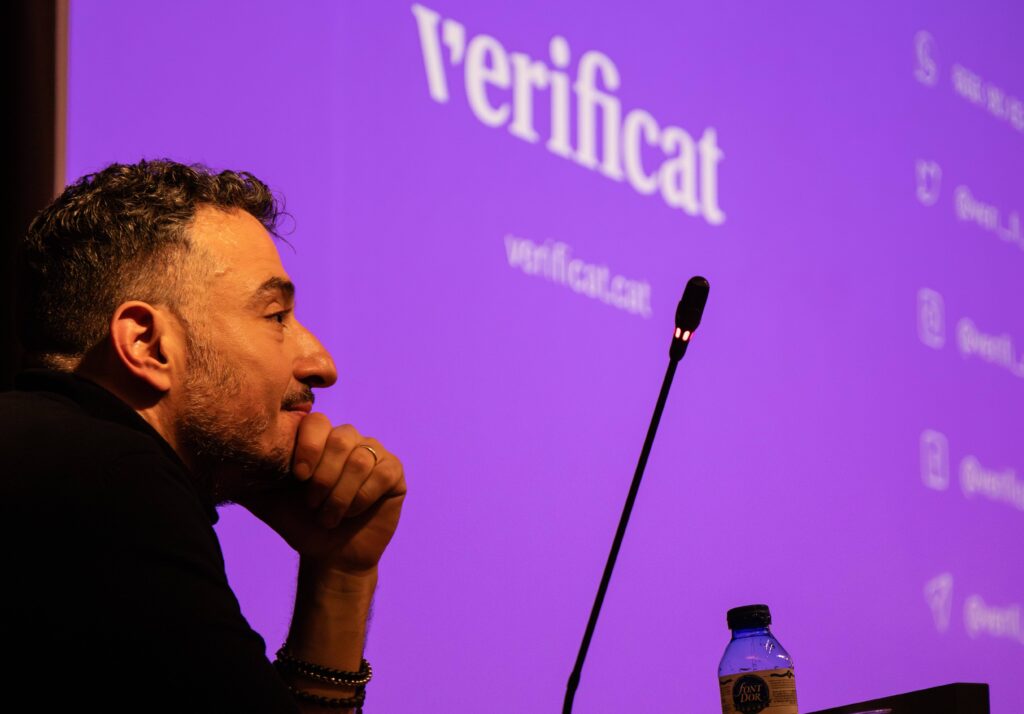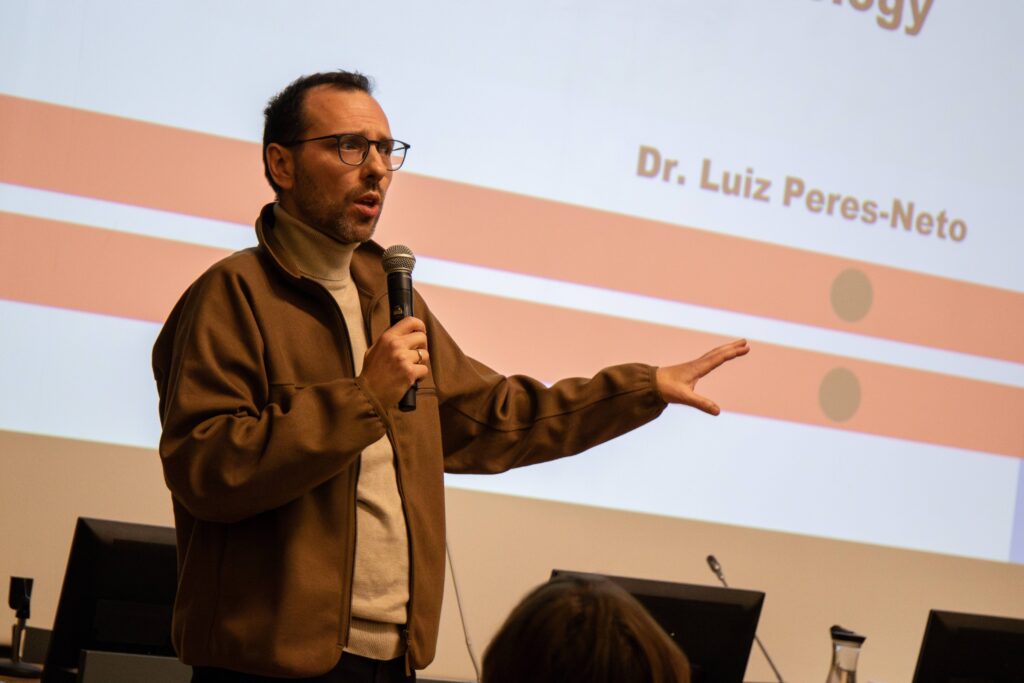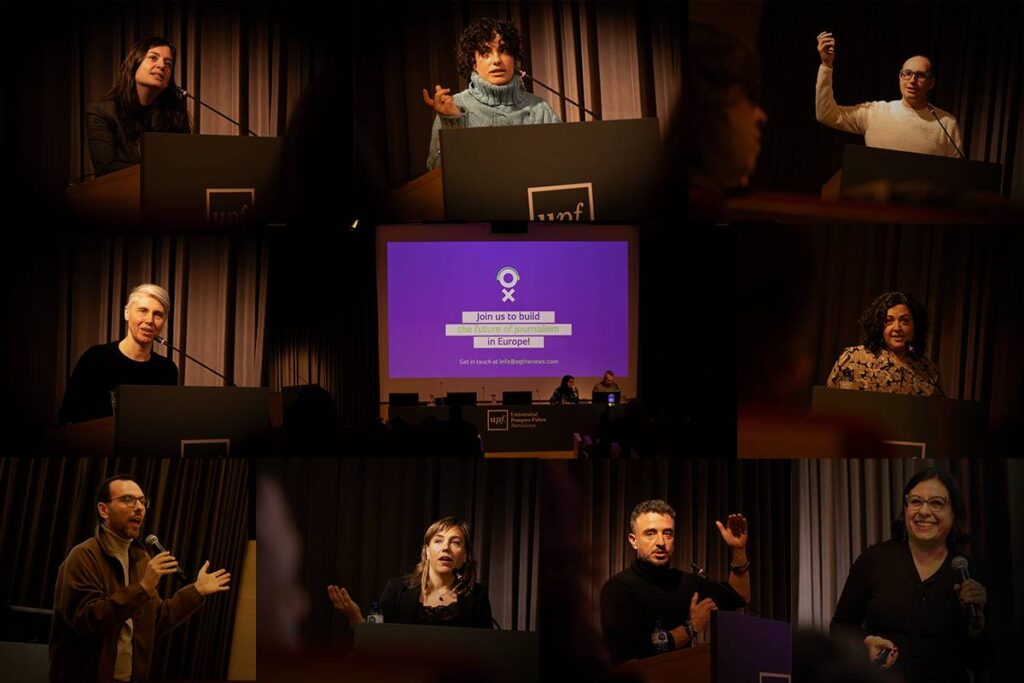In a context marked by fake news and disinformation, the conference ‘Journalism and education: why news in the age of disinformation’ explores how media can become an educational tool. International experts debated the key role of journalism in the critical education of young people, especially in times of crisis.
Journalism has had to adapt to new circumstances in the current era of digital transformation. This has brought many opportunities, but also some important and dangerous risks for the profession. Disinformation, fake news and other similar phenomena lead to the spread of unreliable information, especially on social networks and in critical contexts, such as during the DANA (a cold drop) tragedy or the pandemic.
At this point, a key question arises: is journalism today also an educational tool? Today, many people trust what they see on social networks more than what is published in traditional media. It is with this question in mind that the XQ.EUJOY project was born, an initiative supported by the European Commission with the aim of creating an accessible and educational portal for young people and adolescents, since it is this group that faces the greatest number of challenges.
The auditorium of the Comunicació-Poblenou campus hosted a unique congress that addressed all these issues under the premise “Journalism and education: why news in the age of disinformation”. As soon as the day begins, people take their seats and pay attention. There was an audience in person, but you were also able to follow the various presentations online. For more than 6 hours, there were various conversations about disinformation, journalism and education.
This international conference brought together renowned experts from the world of journalism, education and politics. Among them were academics with outstanding research careers in these fields. In addition, two panels were organised to allow other personalities to speak on a common theme.
The first presentation of the day was given by Cristina Fernández Rodríguez, lecturer at the University of Vic, who presented ‘For a free journalism: 10 reasons for the media to close their accounts on social networks’. Cristina highlighted ten key points: six journalistic, two economic and two ethical.

Among the journalistic reasons, she highlighted that the media cannot control the rules of how social networks are regulated. At any moment, the account can be blocked, the account can be closed. And this is precisely why they cannot control the formats of publication, because they depend on getting hits by creating what appeals to the audience. This reason is closely related to what the speaker calls the dictatorship of SEO. The media are trying to create content on the networks that will go viral, regardless of quality, using a role that is not that of journalists. As a result, the media have become the slaves of social networks. Despite being the biggest producers of content, their accounts are not the most followed.
The growing dependence of media on social networks creates significant risks. Responsible content consumption habits are difficult to adopt, especially for young people, as the current digital context often makes it difficult to access quality information. The media must encourage them to consume responsibly, and it is therefore essential that journalists make their work count. An example of these cases discussed during the presentation is that some media have already abandoned some social networks, such as La Vanguardia or The Guardian, which have deleted their X accounts. What is needed is a change of mentality and more regulation, because a profound change is urgently needed.
This symbiosis between the media and social networks has already posed risks for democracies. A recent example is the Romanian presidential election, which was annulled by the country’s Constitutional Court due to Russian interference via social media.
There is every reason for the media to move away from social media, or at least to rethink how they use it and how it can affect their audiences and how the content they produce is consumed.
After the Q&A session, where the speaker took the opportunity to interact with the audience and answer some interesting questions, it was time for the first panel. The theme of this panel was ‘The voice of the university’, and it was attended by Clara Queralt, a journalism student at the Autonomous University of Barcelona, Antonio Giulio Maglione, an Italian professor, and Panagiota Samiota, a Greek researcher.
Queralt explained her point of view on the changes that journalism is undergoing and gave some context to the current position of the young journalists of the future. Some of her proposals to improve the profession include the elimination of algorithms, a change in consumer habits and improved quality control. Professor Anton Giulio Maglione discussed fake news and deepfakes, how some images and videos are manipulated and how social networks play a fundamental role in their dissemination. Finally, Panagiota Samioti presented the results of a research project that created specific long and short courses to provide university students with tools to detect disinformation.
It was then the turn of the second presentation. This time by Lorenzo Marini, co-founder of the fact-checking platform Verificat. In his presentation, ‘From the newsroom to the classroom’, he addressed issues related to media literacy and how to consume media and social networks in a conscious and responsible way. Marini argued that everything changed when, over a period of two or three decades, there was an enormous increase in the use of the Internet; it went from being a tool used by a few people to a tool used by almost everyone.

The traditional ways of searching for information, in an encyclopaedia or in a newspaper, have faded into the background. Precisely because of this, the reader, with his own education, must know how to identify false information and malicious content in what he consumes. In this information-saturated age, the reader must be able to go to the source of information in order to form a realistic opinion.
With the morning shift over, the afternoon began with the second panel of the day, this time on ‘The Connection to Education’. First up was Leah Pattem, a professor and journalist from Newcastle, who wondered if the photographer and journalist could also be the source of information. Founder of the Madrid No Frills project, she showed no-frills images of the Spanish capital. Pattem sees journalism as a public service and, above all, local journalism. It is local journalism that uses a different vocabulary to talk about the community, which ultimately involves the journalist. At this point she emphasised that the only person who can tell the truth is the person at the centre of the news. She explained how her project goes beyond this, giving cameras to children, to the elderly, to migrants, so that they can take the photos and explain the stories from their own perspective. Leah is just helping them to direct their gaze, giving them the tools to use their voice.
The second participant in this panel was Núria Mora from the Barcelona Education Consortium. As she explained, it is very complex to define what we mean by education, as it has many dimensions. For this reason, she believes that collaboration between journalists and educators is essential to provide a broader understanding of the field. Education is not only a system, but also a reflection of how society works. To explain education is to describe a way of life.
The panel was concluded by Jingrong Tong from the University of Sheffield, who presented the results of his research on the users of mass education courses and their impact on them.
The third paper was ‘Black, illegal, Latino, expat: changing the colonial narrative in the media’ by Eileen Truax, professor and journalist. She began by discussing the institutionalisation of racism and how the media is no stranger to it. When stories are told, narratives are created that have an impact on society. She asked the conference participants to create a picture in their minds of different terms, such as immigrants. Everyone had their own idea of the term based on their references, some of which were represented by the media. As a result, there are certain biases when dealing with issues affecting minorities.

The result is two distinct groups: ‘the others’, them, and us. It is those ‘others’ who have a different appearance, a different religion, a different way of thinking, a different political ideology. People are naturally afraid of what they do not fully understand, but fear is not hatred, it is a learning system. There are dynamics that try to convince us that it is not that we are afraid of these ‘others’, but that we really hate them.
And how is this hatred of the ‘other’ fed? With narratives. With the use of words in the construction of stories. A simple example is the association of catastrophic language with the arrival of migrants. It is a concept that is repeated in several languages and in several countries, it is not an isolated phenomenon, it is systemic. And how can we ensure that these ‘others’ are, in the end, ‘us’? By asking ourselves who we are talking to, by talking specifically about certain groups and by knowing how to grasp the current moment. But what is fundamental is to be able to transform the hate speech of the media into a speech of love, even if it seems utopian.
The final presentation of the conference was ‘Journalism, Polarisation and Algorithmic Epistemology’ by academic Luiz Peres-Neto. Using an approach that drew heavily on previous studies and numerous references, he discussed how political polarisation is inextricably linked to communication and media, although this link has not been taken into account in many projects until relatively recently.

At a time when old and new media still coexist, not all polarisation that is generated is inherently bad. The polarisation that needs to be fought is the one that seeks to destroy institutions and democracy. Constant exposure on social networks to views contrary to our own creates this polarisation, which can become dangerous. In the midst of this climate, there is no clear answer as to how the media can act.
When the conference ended, everyone left with a sense of satisfaction. Many questions had been raised, all related to the role of news and media in the age of disinformation. With many new answers and new knowledge acquired, one leaves the auditorium wanting to continue with the transformation of journalism, the strength of its link with education and how to adapt it to a time when social networks seem to occupy all media space.



